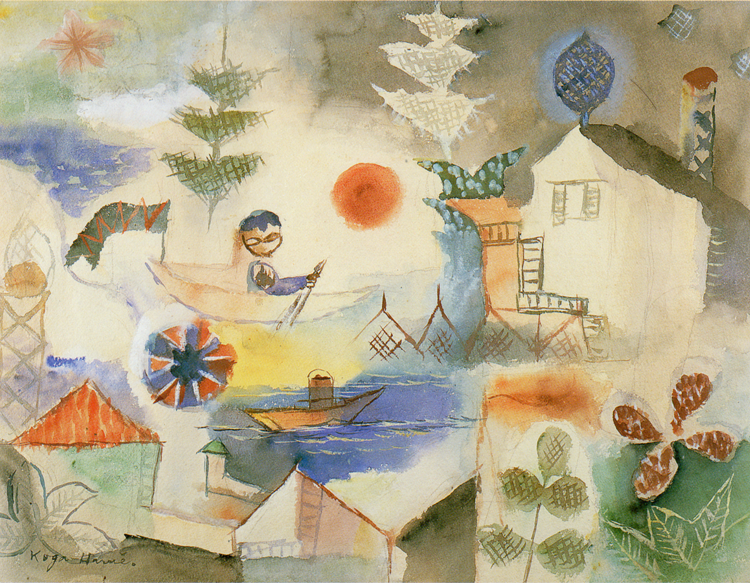by Carlo Carnevale
Il campo delle neuroscienze affettive ha di recente assistito a un energico dibattito tra due diversi approcci alla comprensione delle emozioni. Il primo: le teorie delle emozioni di base (Basic Emotion Theories), a cui ci si riferisce anche con i vari nomi attribuiti ai meccanismi sottesi a esse (circuiti delle emozioni, marcatore somatico) or their supposed nature (nativism vs essentialism); it is at times referred to as the classic view. The alternative approach is today (let us consider the renewed interest in Vygotskij) represented by constructivist theories; the most influent of which is perhaps the theory of constructed emotions proposed by Lisa Feldman Barrett. We may then consider ulterior approaches such as the higher order theory of emotional consciousness by Ledoux and Brown, that somehow situate in between basic emotion theories and the constructivist perspective.
The aforementioned Basic Emotion Theories assert that there are various innate emotional complexes in human experience. These complexes have an evolutionary continuity with other species, to which they are largely akin. The number and nature of these emotions vary from author to author: Silvan Tomkins proposes eight (surprise–startle; interest–excitement; fear–terror; distress–anguish; enjoyment–joy; contempt–disgust; shame–humiliation; anger–rage), Paul Ekman has suggested six (happiness, sadness, fear, surprise, anger, disgust), Jaak Panksepp seven (fear, lust, care, play, rage, seeking, and panic/grief), while other authors like Antonio Damasio operate with subtler distinctions. Antonio Damasio, operate with subtler distinctions.
However numbered or characterized, emotions would be irreducible and constitutive of our biologic heritage. Said emotions seem to be (almost) universally recognizable in manifest phenomena like (for primates) facial expression, although of course these phenomena in humans tend to be articulated in cultural dimensions. In its most credited version, the classic view sees emotions as primitive and primordial and they share transverse goals with "reason" with which they cooperate. The reason-emotion dualism is not intrinsic to basic emotion theories, even if this kind of thinking may be encountered; once again, depending on the specific author.
Contrarily, constructivist theories, propose a complex interaction between neurological, psychological and social factors which degree of affective arousal, in positive or negative fashion, assume a specific guise we refer to as "emotions".
These partake in the brain's effort of processing predictively online experience. The brain, according to such view, is more of a predictive than a reactive machine, it constructs (or simulates) our experience, frame by frame, resting on prior experience it continuously compares with sensory information it receives.
This is the sense in which emotions are constructed in human-specific ways and it would be problematic, ambiguous at least, to identify what is supposedly shared between humans and other species, beyond schematic forms of arousal and valence that lie at the core of these complex interactions.
Naturally, culture plays a prominent role in shaping what we think of as emotional life.
While BET are oftentimes criticized for their essentialism (i.e., the supposed primacy of universals over particulars), constructivist perspectives are considered in their turn to be relativist and seem to contrast with decades of research that ostensibly demonstrate the universality of certain expressions of human emotion. As Lisa Feldman Barrett explains in How Emotions are Made, emotional constructivism combines elements of social constructivism, psychological constructivism, and neuroconstructivism. It is an explicitly anti-essentialist model. Whereas BET heavily rely on observed behavior and are grounded in a rich legacy of classic cross-species research; constructivist theories start from the neurophysiological data and from its failure in confirming to BET's assumptions, leading to the molding of the very subject of research according to classic preconceptions that are then strengthened and result in artifact experimental findings.
In How Emotions Are Made, Barrett argues that these two views have been in conflict "throughout recorded history," from ancient Greece (Plato versus Heraclitus) and classical Buddhism (dharma as essences versus dharma as conceptual constructs) to modern times (Descartes and Spinoza versus Hume and Kant) and beyond. It appears that Darwin himself was conflicted on this issue: Barrett describes On the Origin of Species (1859) as the matrix of a radically anti-essentialist biology. However, later, in The Expression of the Emotions in Man and Animals (1872), this position is retracted and overturned in favor of an "inexplicable essentialism" (Barrett, 2017).
William James, in his Principles of Psychology (among the many we could inspect), assumes a markedly anti-essentialist position, while John Dewey, in his reading, transfigures it, christening his view (unpopular today) the James-Lange theory of emotions, thus radically tainting the perception of James' ideas. And so on. Now, Bareett writes: "Modern neurosciences have offered us to tools to settle the bill and overwhelming evidence shows that the classic view loses". (Barrett, 2017). But is this really the case?
Sources & Further Readings:
F. Caruana, 2017, What is missing in the “basic emotion vs. constructionist” debate?
L. F. Barrett, 2017, “How Emotions Are Made”.
J. Ledoux, 2012, “Rethinking the emotional brain”, Neuron.
E. Jurist, 2019, “Review of How Emotions Are Made”, Researchgate.
S. Asma and R. Gabriel, United by Feelings, Aeon.



